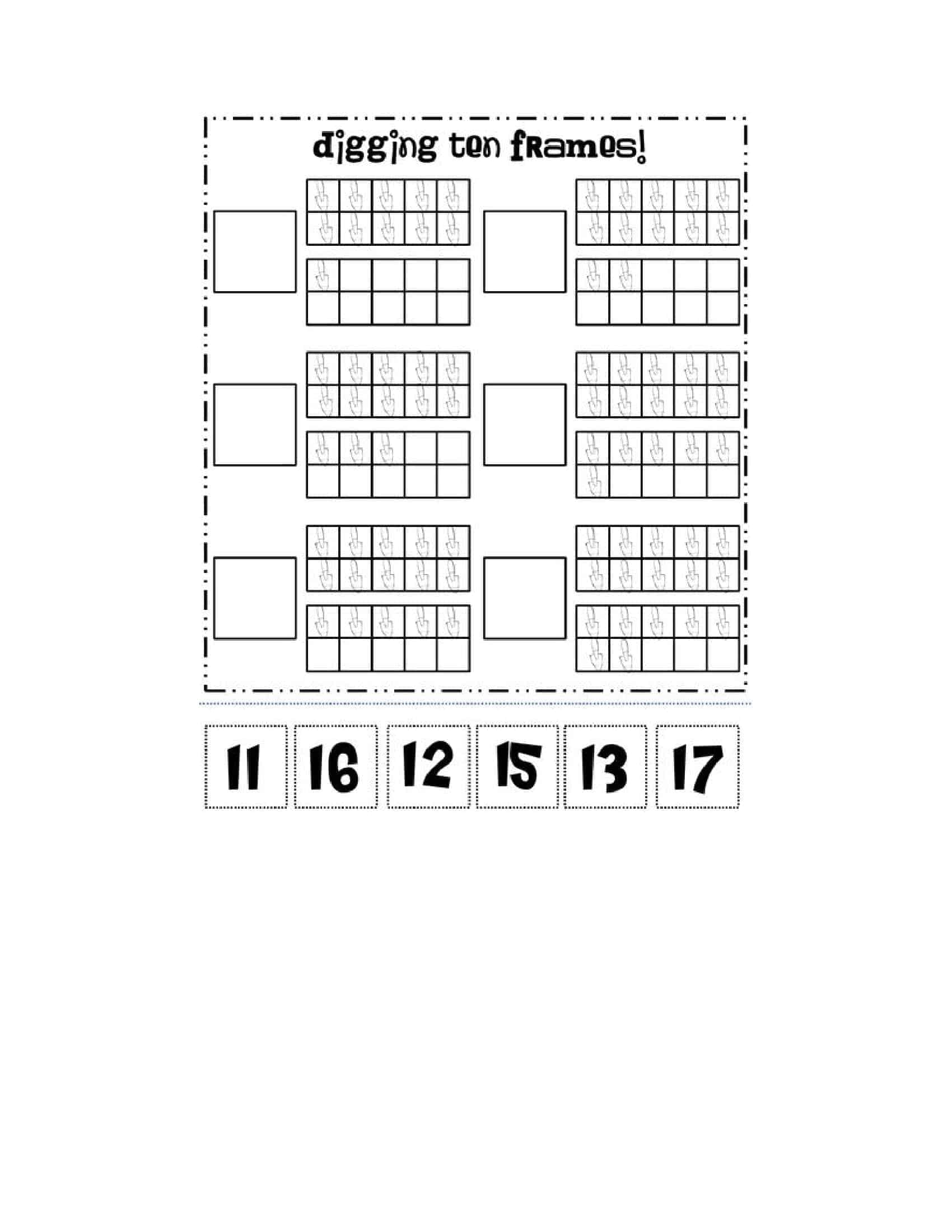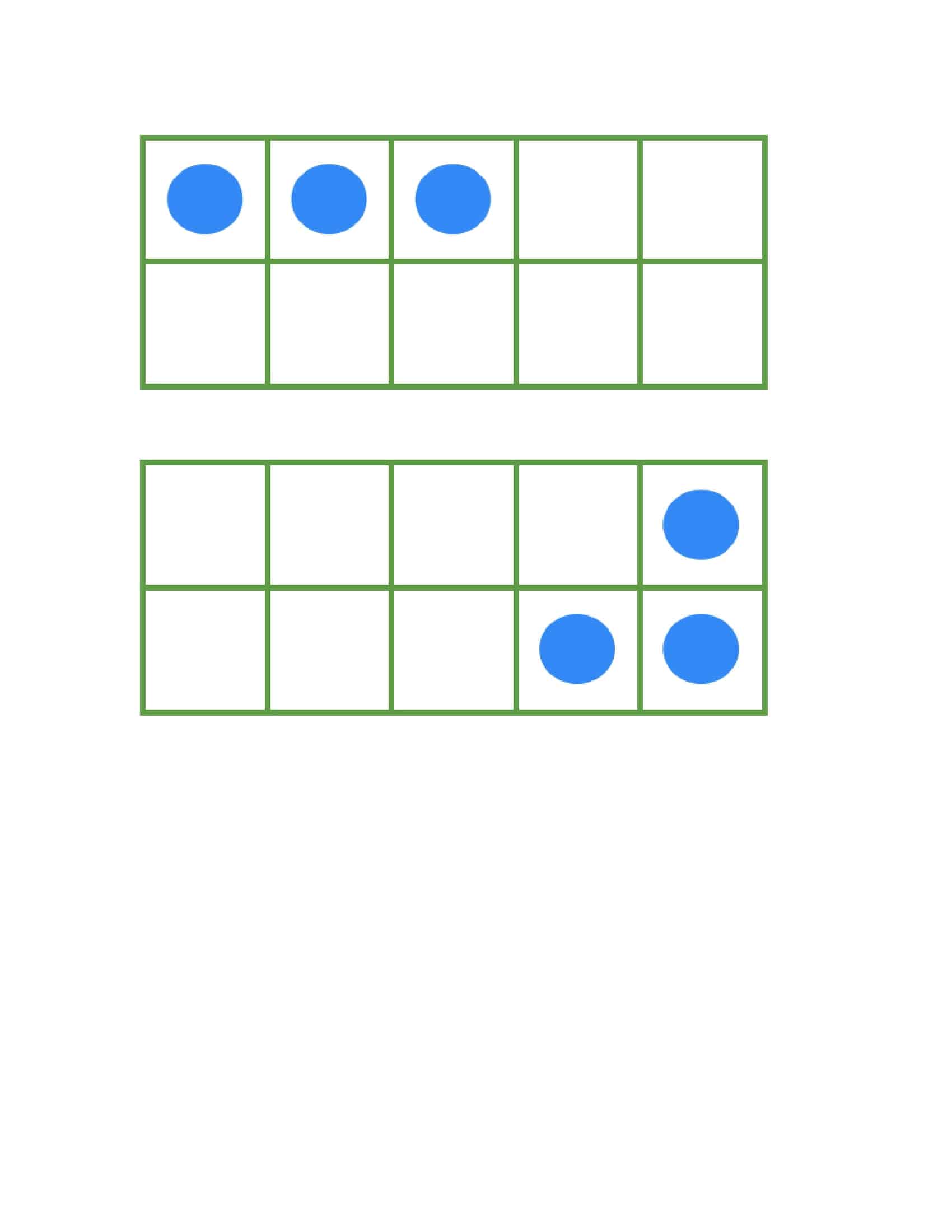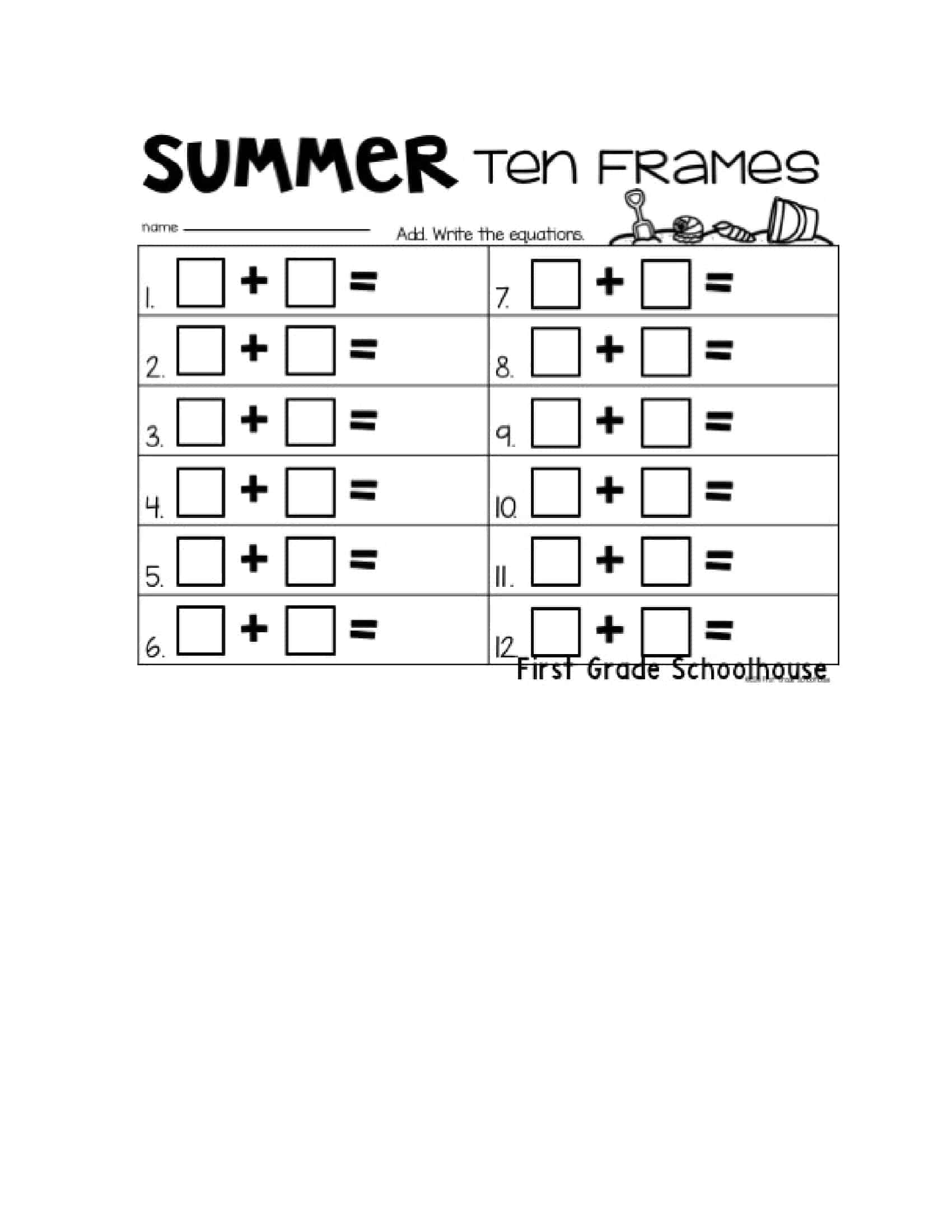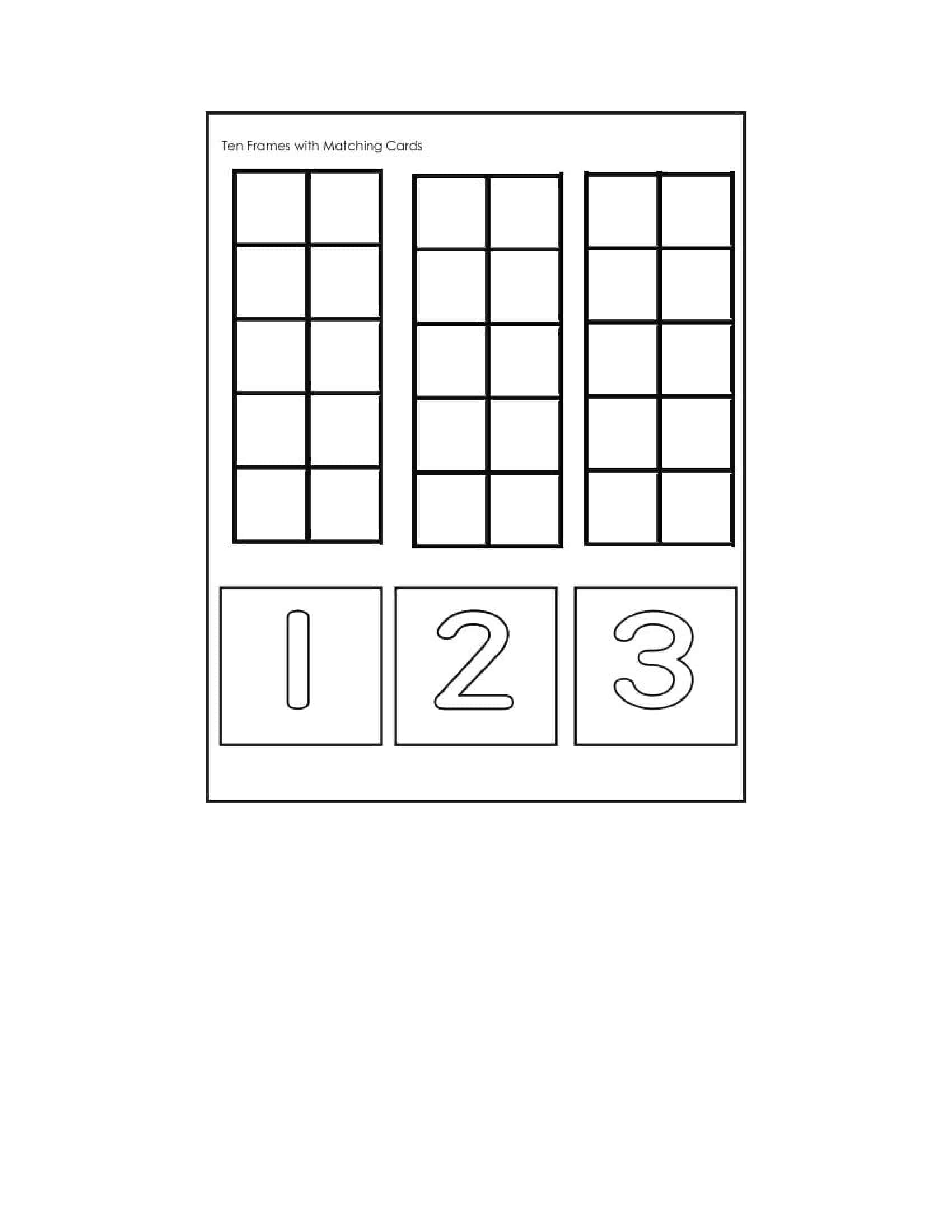Ten frames are a visual representation of the base-ten number system and are commonly used in elementary education to teach counting and basic arithmetic. They are a useful tool for helping students understand place value and the relationship between numbers.
In this article, we will explore the benefits of using ten frames in the classroom and provide examples of how they can be used to teach various math concepts. We will also provide tips for using ten frames effectively in your instruction. Whether you are a teacher or a parent looking to support your child’s math learning, this article will provide valuable insights and resources for using ten frames in your educational setting.
Table of Contents
Ten Frame Templates
Enhance early math skills and promote number sense with our comprehensive collection of Ten Frame Templates. Ten frames are visual tools consisting of two rows of five boxes each, used to represent numbers up to ten. Our customizable and printable templates provide a structured framework for teaching and practicing counting, addition, subtraction, and number recognition.
Whether you’re an educator, parent, or caregiver, our templates offer various layouts and designs to engage learners of all ages. By utilizing our Ten Frame Templates, you can help children develop a strong foundation in numeracy, understand number relationships, and build fluency in basic math operations.
With visually appealing designs and user-friendly layouts, our templates provide a fun and interactive way to reinforce math concepts. Foster mathematical thinking, problem-solving skills, and mathematical fluency with our Ten Frame Templates. Download now and make learning math an engaging and enjoyable experience for young learners.
History of Ten Frame

The concept of ten frames has its roots in the base-ten number system, which is a mathematical system in which numbers are represented using ten digits (0-9) and a place value system. The base-ten system is based on the fact that humans have ten fingers and has been used for counting and arithmetic for thousands of years.
The specific use of ten frames as a teaching tool in education is more recent. Ten frames were first introduced in the 1980s as part of the whole language movement in education, which focused on using visual and hands-on learning methods to teach reading and math. Ten frames were initially developed as a way to help young children understand the concept of place value and how numbers relate to one another.
Since their introduction, ten frames have become a widely used tool in elementary education and have been embraced by educators as a way to teach basic math concepts in a visual and interactive way. Ten frames are especially useful for helping young children understand the relationship between numbers and quantities, as they provide a concrete representation of quantities up to ten.
There are many ways that ten frames can be used in the classroom to teach math concepts. For example, teachers can use ten frames to introduce counting and basic arithmetic concepts such as addition and subtraction. They can also be used to teach place value, helping students understand the concept of carrying and borrowing in multi-digit arithmetic.
Ten frames can be used in a variety of settings, including traditional classroom instruction, small group instruction, and independent learning activities. They can be used with manipulatives such as counting bears or blocks, or they can be used with paper and pencil. There are also many online resources and digital tools that incorporate ten frames into math games and interactive activities.
Overall, ten frames are a valuable teaching tool that can help students understand basic math concepts and build a strong foundation for future math learning. They provide a visual and interactive way for students to engage with math concepts and can be used in a variety of settings to support learning. Whether you are a teacher looking to incorporate ten frames into your instruction or a parent looking to support your child’s math learning at home, there are many resources available to help you get started.
Ten Frame Activities
Ten frame activities are educational activities that utilize ten frames as a visual representation of the base-ten number system to teach counting and basic arithmetic concepts. Ten frames are a useful tool for helping young children understand place value and the relationship between numbers, and they can be used in a variety of settings, including traditional classroom instruction, small group instruction, and independent learning activities.
There are many different ways that ten frame activities can be used to teach math concepts. Some examples include:
Counting: Ten frame activities can be used to introduce counting and help students understand the relationship between numbers and quantities. For example, students can use ten frames with manipulatives such as counting bears or blocks to count up to ten.
Addition and subtraction: Ten frame activities can also be used to teach basic addition and subtraction concepts. Students can use ten frames to model addition and subtraction problems using manipulatives or paper and pencil.
Place value: Ten frame activities can be used to teach place value, helping students understand the concept of carrying and borrowing in multi-digit arithmetic. Students can use ten frames to model multi-digit arithmetic problems and practice regrouping.
Number sense: Ten frame activities can help students develop their number sense and understand the relationship between numbers. For example, students can use ten frames to compare numbers and practice basic arithmetic concepts such as more, less, and equal to.
Ten frame matching: This activity involves matching numbers to sets of objects using ten frames. Students can use manipulatives such as counting bears or blocks to fill in the ten frames and match the number of objects to the corresponding number.
Ten frame addition and subtraction: In this activity, students can use ten frames to model and solve addition and subtraction problems. They can use manipulatives or paper and pencil to represent the numbers in the ten frames and practice basic arithmetic skills.
Ten frame place value: This activity helps students understand place value by using ten frames to represent multi-digit numbers. Students can use manipulatives or paper and pencil to fill in the ten frames and practice regrouping and place value concepts.
Ten frame number sense: This activity involves using ten frames to compare numbers and practice basic arithmetic concepts such as more, less, and equal to. Students can use manipulatives or paper and pencil to fill in the ten frames and compare the numbers represented.
Overall, ten frame activities are a valuable tool for teaching math concepts and helping students develop a strong foundation in math. They provide a visual and interactive way for students to engage with math concepts and can be used in a variety of settings to support learning. Whether you are a teacher looking to incorporate ten frame activities into your instruction or a parent looking to support your child’s math learning at home.
Benefits of using Ten Frames
There are many benefits to using ten frames in the classroom or at home to teach math concepts. Some of the key benefits of using ten frames include:
Visually represent abstract concepts: Ten frames provide a visual representation of the base-ten number system, which can be helpful for students who are learning abstract math concepts.
Build number sense: Ten frames can help students develop their number sense and understand the relationship between numbers.
Support place value understanding: Ten frames can be used to teach place value, helping students understand the concept of carrying and borrowing in multi-digit arithmetic.
Engage students in hands-on learning: Ten frames provide a hands-on way for students to engage with math concepts, which can be especially beneficial for students who learn best through kinesthetic activities.
Support understanding of basic arithmetic concepts: Ten frames can be used to teach basic arithmetic concepts such as counting, addition, and subtraction, providing a concrete way for students to understand these concepts.
Encourage collaboration: Ten frame activities can be done in small groups or as a class, providing opportunities for students to collaborate and learn from each other.
FAQs
Here are some answers to frequently asked questions about ten frames:
How are ten frames used in education?
Ten frames are used in education to teach math concepts such as counting, addition, subtraction, and place value. They can be used in a variety of settings, including traditional classroom instruction, small group instruction, and independent learning activities. Ten frames can be used with manipulatives such as counting bears or blocks, or they can be used with paper and pencil.
Are there any downsides to using ten frames?
Ten frames are a useful teaching tool, but they are not a solution for all math learning needs. Some students may benefit more from other types of teaching methods or tools. It is important to consider the needs of each individual student and use a variety of teaching strategies and tools to support their learning.
Are there any online resources or digital tools that incorporate ten frames?
Yes, there are many online resources and digital tools that incorporate ten frames into math games and interactive activities. These resources can be a useful supplement to traditional teaching methods and can provide additional opportunities for students to practice math concepts using ten frames.
Can ten frames be used to teach higher level math concepts?
Ten frames are most commonly used to teach basic math concepts such as counting, addition, and subtraction, as well as place value. While they may not be as useful for teaching higher level math concepts, they can still be a valuable tool for reinforcing basic math skills and building a strong foundation for future math learning.
How can ten frames be used in a homeschool setting?
Ten frames can be a useful tool for teaching math concepts in a homeschool setting. Parents can use printable ten frames, manipulatives such as counting bears or blocks, and online resources to incorporate ten frames into their math instruction. Ten frame activities can be done independently or in small groups, providing opportunities for students to practice math skills and learn from each other.
Are there any printable ten frame resources available?
Yes, there are many printable ten frame resources available online, including ten frame worksheets and activity sheets. These resources can be a useful supplement to traditional teaching methods and can provide additional opportunities for students to practice math concepts using ten frames.






































![%100 Free Hoodie Templates [Printable] +PDF 1 Hoodie Template](https://www.typecalendar.com/wp-content/uploads/2023/05/Hoodie-Template-1-150x150.jpg)
![Free Printable Food Diary Templates [Word, Excel, PDF] 2 Food Diary](https://www.typecalendar.com/wp-content/uploads/2023/05/Food-Diary-1-150x150.jpg 150w, https://www.typecalendar.com/wp-content/uploads/2023/05/Food-Diary-1-1200x1200.jpg 1200w)
![Free Printable Roommate Agreement Templates [Word, PDF] 3 Roommate Agreement](https://www.typecalendar.com/wp-content/uploads/2023/06/Roommate-Agreement-150x150.jpg)
